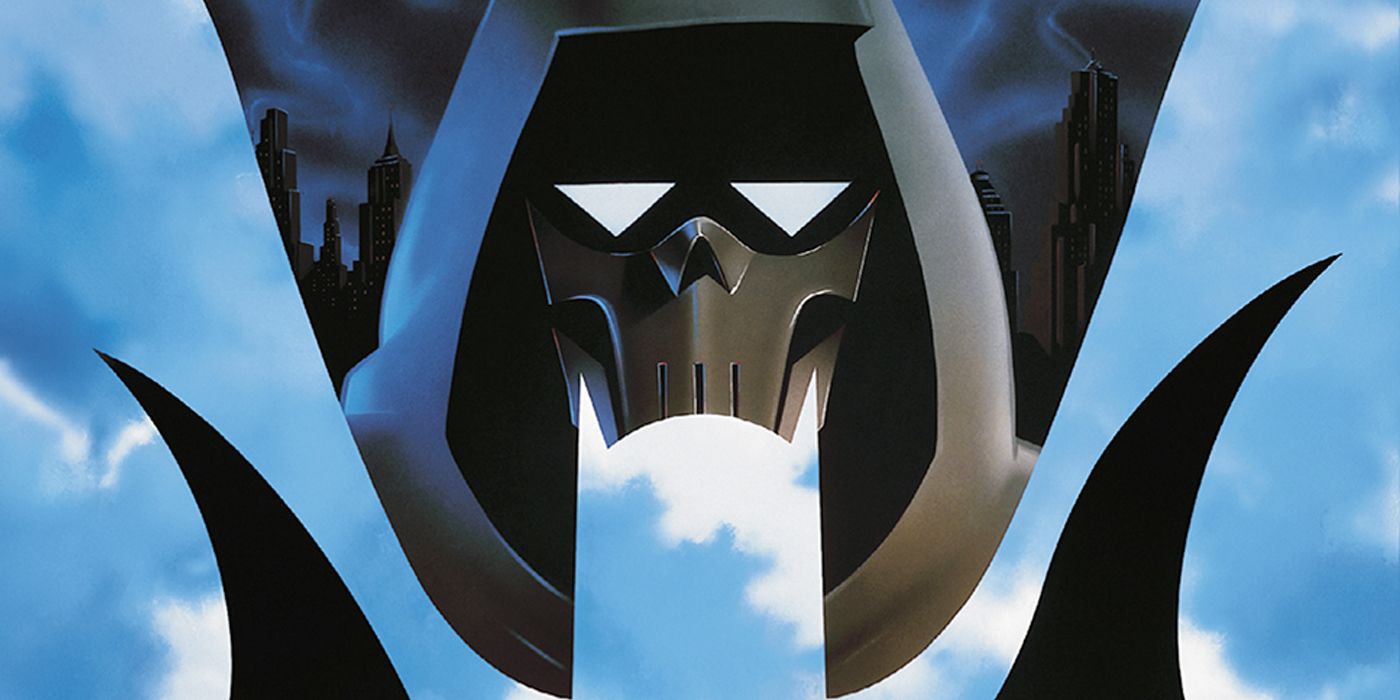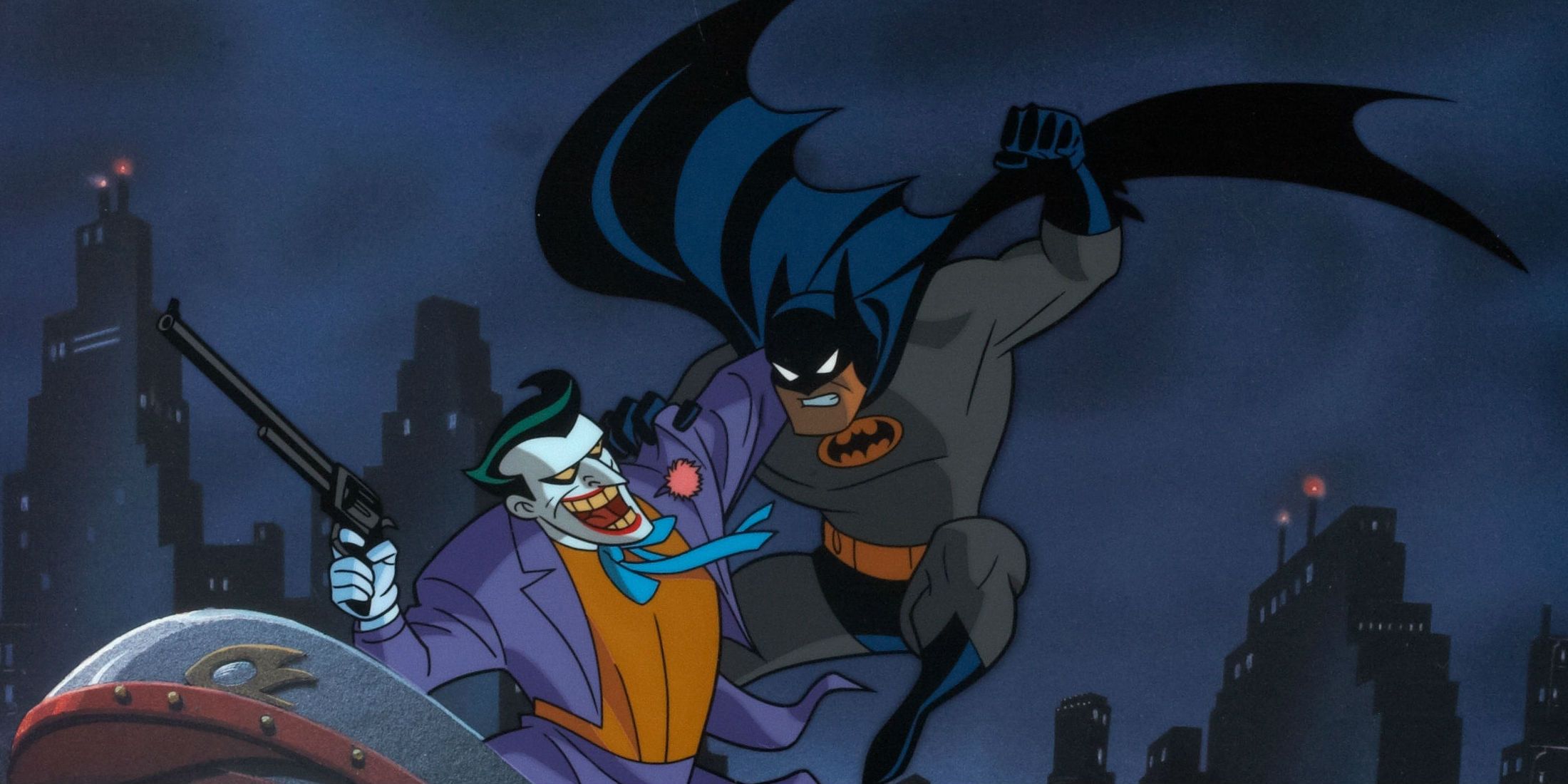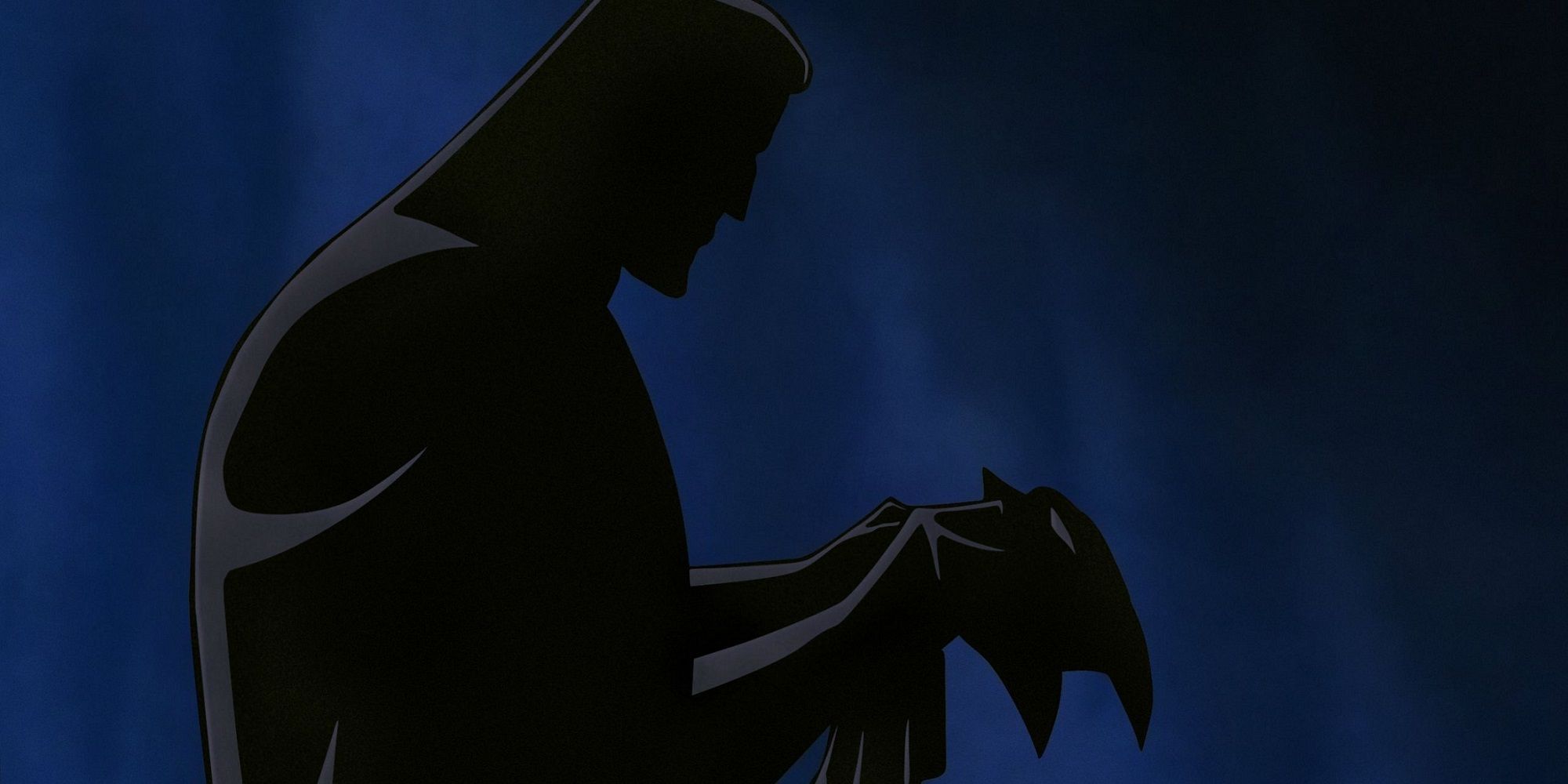Pop quiz: What’s the best Batman movie? Is it The Dark Knight? Maybe Batman Returns? What about Batman v Superman? There’s no clear answer; it depends on who you’re asking, right? Follow up question: what’s the best Batman adaptation? Batman: The Animated Series, no contest.
The revered cartoon casts a long shadow over virtually every Hollywood project featuring the Dark Knight that has followed. It’s widely considered to be the best adaptation of Batman, and one of the all-time greatest animated series. Ask any Bat-fans who their favorite Batman and Joker is, and chances are good they’ll say Kevin Conroy and Mark Hamill. How is it, then, that a theatrical movie spun out from B:TAS is one of the most underrated superhero movies of all time?
RELATED: Batman: Mask of the Phantasm Blu-Ray Remaster Announced
Batman: Mask of the Phantasm was directed by Eric Radomski and Bruce Timm, the same team who originally developed the animated series, and was written by a team of B:TAS regulars: Alan Burnett, Paul Dini, Martin Pasko and Michael Reaves. It was released on Christmas Day, 1993 just after the first season of the animated series had concluded. It was originally planned to be a direct-to-video release, but was bumped up to a full theatrical feature due to the show's growing fanbase. By some incredible feat of perseverance, it was created in less than a year of production, which is crazy considering most animated feature films take at least double that time.
The set-up was simple; a new vigilante (Phantasm) is murdering various mob bosses, with a Gotham City councilman placing the blame on Batman. Now, the Caped Crusader must uncover the mystery of the Phantasm, protecting the criminals he’s sworn to take down, while the city’s police hunt for him. The film also delves into the Dark Knight’s past when an old love interest, Andrea Beaumont, returns to Gotham. Half the film is told through flashbacks, taking us to the time just before Bruce took up the mantle, and revealing the moment that pushes him to become the Bat.
The easy sell for this movie is that it's everything good about Batman: The Animated Series, but with a feature film budget. One of the weakest parts of B:TAS is the inconsistent animation from episode to episode, but that's not an issue here. The animation is more fluid, the designs more crisp and stylish, the combination of film noir and Art Deco visuals more striking. Even Shirley Walker’s already amazing score is cranked up to 11. The film opens with a haunting orchestral chorus, setting the tone and indicating the no, this isn’t just another episode of the series. It’s bigger and bolder, while still bringing the same level of maturity and nuance audiences had grown to expect.
So how exactly did Mask of the Phantasm fly under the radar? Well, the marketing wasn’t great, with barely any press leading up to its release day. On top of that, a sole theatrical trailer was cut, and managed to make the film look like an average straight-to-video release, created to cash-in on the popularity of the animated series and Batman Returns, which had been released the previous year. It barely made back its $6 million budget, which sounds impossible to imagine nowadays when DC's animated universe film regularly turn a profit.
RELATED: Every DC Universe Original Movie To Be Collected In A Massive Box Set
Thankfully, a cult following for the film quickly grew. When it arrived on on home video a few years’ later, film critics Gene Siskel and Roger Ebert went out of their way to review it on their eponymous show. The pair gave it an overwhelmingly positive review, regretting that they missed it in theaters because they had initially wrote it off as a cartoon for children. Siskel’s only criticism was that he didn’t like Hamill’s Joker voice!
RELATED: From “Batman ’66” to “Dark Knight Rises”: Every Batman Movie, Ranked
What is it about Mask of the Phantasm that gets it put on the same level as, and possibly even above, Christopher Nolan’s The Dark Knight? That’s simple, really: It’s the closest any film has ever gotten to capturing just who and what Batman is, as both a character and a concept.
It shouldn’t be surprising, considering how well the animated series was at boiling down every character down to their core concepts, and most of the big hitters -- including Dini -- worked on the film. The Joker isn’t even the main antagonist, as the iconic villain only showed up for the film’s final third. In the few scenes he's in, it still manages to be one of the best depictions of the character (despite's Siskel's misguided reaction). Hamill effortlessly shifts from hilarious to terrifying, sometimes within the same line of dialogue.
It revisits Bruce’s pre-Batman days, recasting him as a man caught between two worlds: the man and the cowl. When Mask of the Phantasm was released, no Batman movie had depicted the period between the death of Bruce’s parents and the first time he dons the cape. We wouldn’t see that until Batman Begins, in 2005. There are even shades of Frank Miller and David Mazzucchelli’s Batman: Year One, when Bruce takes to the streets of Gotham wearing black sweats and a balaclava.
It presents the intense conflict within Bruce in a way that no feature film had before. We get a glimpse of Bruce’s vulnerability, on his hands and knees at his parent’s grave begging for forgiveness. He promised his parents he’d avenge them, but wouldn’t they want him to overcome his grief and finally be happy? He’s a broken man telling his parents, “It just doesn't hurt so bad anymore.” It’s a tragic moment, because what's the right answer to a situation like this? Should he keep his promise to his parents, or finally let the wound left by their death heal?
What makes it even more heartbreaking is that you know his choice here doesn’t change anything, because it’s a flashback. This happiness and normalcy is fleeting; Bruce doomed to become Batman. In the flashback Bruce and Andrea visit the Gotham World of Tomorrow fair, a bright and optimistic view of the future. But in the present, Gotham is a grim, derelict mess. It’s hard to miss the symbolism of Bruce’s fate.
When we finally get to see the moment Bruce Wayne becomes Batman, not only the most memorable moment of Mask of the Phantasm, it’s one of the best Batman moments, period.
Bruce eventually proposes to Andrea, which she initially accepts only to later reject when she flees the city with her father. She was the only thing keeping Bruce tethered to the real world, the only reason for him not to become Batman. When she leaves, that connection is gone. Without her, he can finally shed the last of his humanity to become an unstoppable force of justice.
Trailer for ‘Batman: Death of a City’ fan film marks return of Phantasm
Alfred's reaction when Bruce pulls on the mask for the first time, says it all. Gasping, “My God!” Alfred realizes that Bruce Wayne is gone. What audiences would expect to be a moment of triumph is actually bittersweet tragedy. He’s Batman, but at what cost?
RELATED: Michelle Pfeiffer’s Catwoman Is Still Batman’s Best Movie Villain
The film also analyzes one of the Dark Knight’s greatest internal conflicts: What is the difference between justice and vengeance? That’s what the Phantasm represents, the dark, alternate “What If...?” version of Batman. A vigilante whose hatred poisons them, transforming them into a cold-blooded killer. Near the end of the film, Alfred consoles a conflicted Batman, who asks why someone like the Phantasm would become the very thing they hate. “Vengeance blackens the soul”, the butler explains. “I've always feared that you would become that which you fought against. You walk the edge of that abyss every night.
The television show always tackled mature themes in a way both children and adults could enjoy, and thanks to its PG rating, Phantasm does as well. A gangster falls into a grave and is killed by Phantasm pushing a giant angel statue onto him, it heavily implies a sex scene between Bruce and Andrea, and we get one of the most chilling depictions ever of someone under the influence of Joker’s gas. There’s a sequence where Batman is hunted down by the Gotham police, becoming more visibly bloodied and bruised as the confrontation progresses (again, influenced by a similar scene from Miller and Mazzucchelli’s Year One).
Ultimately, Mask of the Phantasm works so well because it’s main concern is Batman, that isn’t afraid of asking the hard questions about the Dark Knight. By becoming Batman, what did Bruce sacrifice? What would Batman become if he finally stepped over that edge and became the very thing he set out to destroy? Can Batman be happy and still be Batman? What exactly do his rogues say about him? In the present day story arc, Andrea drops what can only be described as the most devastating burn of all time on Bruce. “The way I see it, the only one in this room controlled by his parents is you,” she spits after Bruce asks if she still follows her father’s orders.
The film channels everything great about Batman comics into a single. cohesive story. It maintains the style of the animated series, but draws in influence from classic Batman stories. There are the previously mentioned Year One homages, while the Phantasm character draws from the Reaper of the comics' Year Two storyline. There’s a great tribute to Dick Sprang’s giant objects, as Batman and the Joker duke it out like kaiju in a model Gotham City. It even includes homages to other animated movies, including a scene where a young Bruce kicks a thug off of a moving motorcycle, a direct tribute to a similar scene in Akira.
In the span of a tight 75 minutes (for comparison sakes, this is half the run time of The Dark Knight) Phantasm presents one of the most sophisticated looks at what makes Batman Batman. It’s got the stylishness of Tim Burton, the nuanced character study of Christopher Nolan, and the fanboyism of Zack Snyder all rolled into one. It’s an underrated masterpiece of both animation and superheroics that wants you to celebrate everything that makes Batman great, all while contemplating the man beneath the mask.




